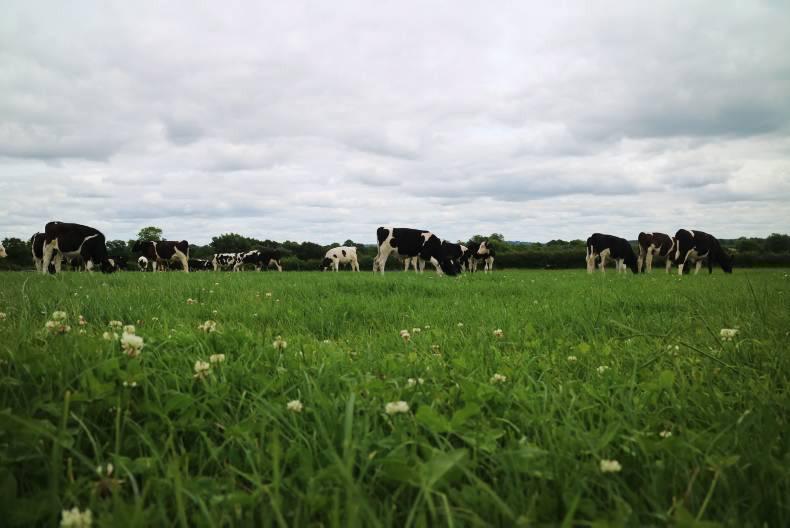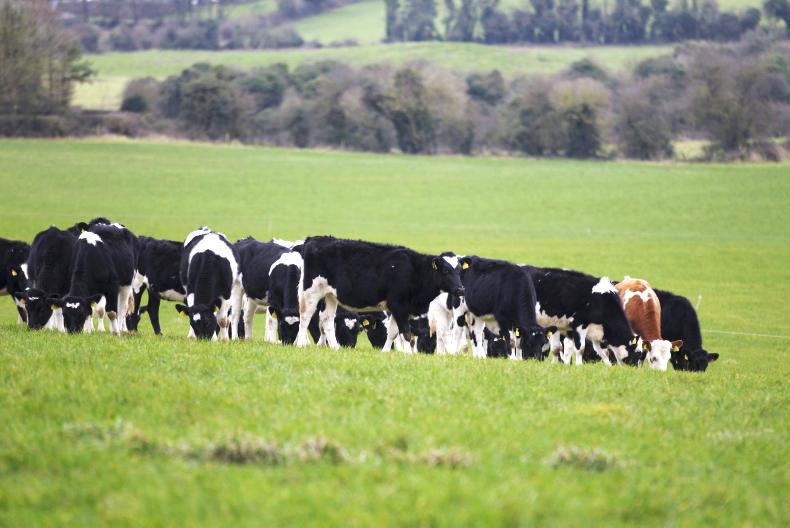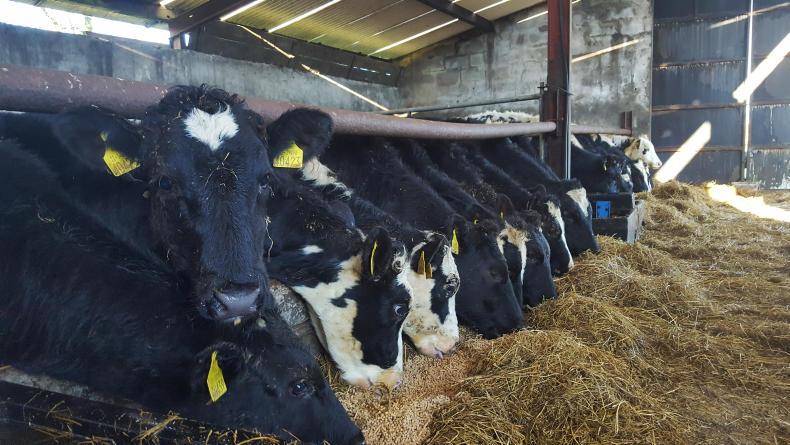While the target for this period would be to have built up a farm grass supply of around 15 grazing days (20 on wetter farms), this figure comes with a health warning.
Those who’ve been able to build from 15 to 20 days in a relatively short period of time need to monitor the quality of their swards carefully. Much of the country is still experiencing unprecedented growth rates for this time of year. At a growth rate of 80kg, which has been the norm for the past month, even a highly stocked farm would be gaining four grazing days every week if no surplus was being removed. At this rate of growth, quality will have dipped dramatically by the time stock get to graze it.
I would say that 15-18 grazing days is still plenty for most farms at present given the high growth rates. Ideally, we would look at adding 1.5 grazing days-worth of grass supply to the farm every week for the next month. The aim is to have supply peaking in mid-September. In a typical year, it is here when growth takes a dive and the idea is to have a bank of grass built up by then in order to maintain stock into the end of the grazing season and allow for a wedge of grass in the spring.
To calculate your grazing days ahead, you first need to work out your demand. Obtain your grazing stocking rate by assuming that suckler cows are 0.9, young calves (0-6 months) are 0.2, older calves (6-12 months) are 0.4, one- to two-year old cattle are 0.7 and 2+ year-olds are 1.0 livestock units (LU). Calculate your total grazing LU and divide by the land area allocated to them to get your stocking rate. Multiply this figure by 18 to get your daily demand in kg/ha.
For example, 30 cows and 30 April-born calves grazing 15ha is a stocking rate of 2.2 LU/ha. The target for this farm at the moment would be to have an average farm cover of 675kg DM/ha (17 grazing days: 2.2 x 18 x 17), building this to around 1,000kg DM/ha (25 days) in mid-September. Spread 25-30 units of N across the whole farm in August to help boost supplies.
Des and Frank Beirne
Co Longford
Farming system Suckler to beef
Land type Heavy
Growth rate (kg DM/ha) 114
Avg farm cover (kg DM/ha) 1061
Stocking rate (LU/ha) 3.22
Growth is staying high which is making up for the slump that last week’s wet weather brought. We took 45 acres of second-cut silage on Sunday and though we got some spells of rain while it was on the ground, it’s saved at least. Now that the silage ground is back in the rotation, our “days ahead” figure will begin to build naturally. Starting to stretch out supply now will ensure that we’ve got grass for the back end and crucially, the springtime. We have bulls in the shed nearing finish at present. They do 2kg of weight gain daily for 110 days here. Weights are taken on these bulls every 30 days to identify any issues quickly. Last year, we found that bulls stalled during their second month of finishing – our high-molybdenum soils were reducing copper availability and causing a deficiency. It was very strange because the animals looked to be thriving. We now use effervescent tablets in our drinkers to combat the problem.
Donal Scully
Co Limerick
Farming system Suckler to beef
Land type Dry
Growth rate (kg DM/ha) -
Average farm cover (kg DM/ha) -
Stocking rate (LU/ha) -
The weather is good here and the ground is dry. There is just the right mixture of heat, sunlight and moisture at present, which is great. Grass supply is looking healthy and I’m continuing to bale up surplus. Including first-cut, I have 800 bales in the yard and there are 25 acres closed for a second cut in the coming weeks. I’m yielding, on average, four to five bales per acre on the surplus grass bales and expect them to have DMD values in the high seventies. Nearly all of my paddocks have been cut at least once for bales, with some having been cut twice.
There are just five cows left to calve. So far, I have 45 cows calved and 48 calves on the ground – our best ever performance. I put it down to easy-calving sires. I have assisted just six births and in previous years it’s been three times this. Heifers were in calf to RIO, ZAG and ONI while our mature cows were mated with a Charolais stock bull with just 3% calving difficulty.
Niall Patterson
Co Leitrim
Farming system Suckler to weanling
Land type Very heavy
Growth rate (kg DM/ha) -
Average farm cover (kg DM/ha) -
Stocking rate (LU/ha) -
I’m hoping we get a dry period here soon. At the beginning of last week, there were two dull wet days, followed by a day of persistent heavy rain on the Wednesday.
Things went south and 12 cows and calves had to come in for a couple of days. At present, the ground is really soft and we’re moving stock on quickly before they get a chance to damage the sod. It means that target residuals aren’t getting hit but that’s a reality we must live with and a common theme around here.
If things don’t improve I will move stock on to rougher ground for a while.
All calves are creeping ahead at present and eating around 1.5kg of concentrate. They look to be doing very well. I’ll take my second cut in the next couple of days. In truth, there is a section of it that should have come out a week ago and has gotten very strong, but it’ll make a good feed for dry cows.
Chris McCarthy
Co Westmeath
Farming system Suckler to weanling
Land type Dry
Growth rate (kg DM/ha) 86
Avg farm cover (kg DM/ha) 1,513
Stocking rate (LU/ha) 2.85
Lots of rain and heat are leading to lots of grass here. I’ve got 24 days of grazing on the farm which is probably too much at present. I’m taking out more paddocks this weekend which should bring the figure back a bit. The whole farm got one bag of CAN this week and will get the same again nearer the end of the season. It’s important that I build up grass for both the back-end and next spring.
I begin closing up my farm in mid-October and this ensures that I have grass ready to go on Valentine’s Day where weather permits. Grass in the shoulders of the year is worth a fortune in my opinion.
I plan to begin weaning in three weeks. I’ve started creep-feeding and calves will get a dose and a pneumonia vaccination in the coming days. I always avoid tasks like this around weaning, as it only adds to their stress levels and the vet bills when they inevitably get sick.










SHARING OPTIONS